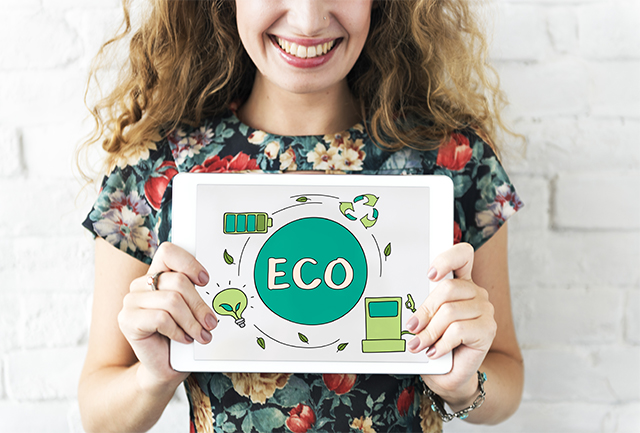Each year, Earth Month is commemorated to raise awareness of our planet’s environmental challenges and the role that we, as individuals and businesses, need to play in ensuring a sustainable future. With the detrimental consequences of climate change becoming increasingly evident and the world’s finite natural resources being stretched to their limits, the need to foster a cleaner, greener, and more sustainable economy has become more pressing than ever. From small start-ups to multinational conglomerates, business enterprises have an enormous influence on the environment in terms of the raw materials they use and the waste they generate.

During Earth Month, brands like Wonder Melon show us by their example how to adopt sustainable business practices and promote environmental conservation, ensuring economic growth.
In this blog post, we will be looking at the various ways in which brands can adopt fair trade practices, reduce waste, and embrace the circular economy model.
Adopting Fair Trade Practices
Fair trade practices are instrumental in promoting sustainable livelihoods and safe working conditions for workers, protecting the environment, and maintaining transparency beyond a company’s immediate purview. By implementing these practices, businesses can transform their supply chains to be more sustainable and ethical. Some of the ways in which brands can adopt and propagate fair trade practices include:
- Sourcing eco-friendly raw materials from certified suppliers.
- Partnering with fair trade-certified producers to ensure the well-being of workers and their communities.
- Ensuring that suppliers adhere to sustainable and responsible production methods.
- Regularly monitor and communicate the social and environmental impact of the company’s operations to stakeholders.
Reducing Waste and Embracing Circular Economy
Waste reduction is a crucial aspect of sustainable business practices, as it lessens the burden on the environment and natural resources while also reducing operating expenses. Some key strategies for reducing waste include:
- Conducting a waste audit to identify and measure the amount of waste generated by the company.
- Streamlining the company’s production processes to minimize waste generation.
- Reducing the use of raw materials by adopting innovative design and manufacturing solutions.
Another way to reduce waste is to minimize the packaging materials brands use. From opting for eco-friendly and biodegradable packaging materials to encouraging customers to reuse or recycle packaging, numerous opportunities exist for companies to make their packaging practices more sustainable.
Recycling and upcycling are also effective means of managing waste and minimizing a brand’s environmental footprint. By recycling waste materials and transforming them into new products, companies can conserve resources, save energy, and reduce greenhouse gas emissions. On the other hand, upcycling involves repurposing used or discarded materials to create new products of higher value, thus promoting the concept of “waste as a resource.”
The Circular Economy Model: Definition and Benefits
While traditional linear economies rely on a “take-make-dispose” approach, the circular economy model works on the premise of regenerating resources and creating a closed loop of production and consumption. By refusing, reducing, reusing, repairing, and recycling resources, businesses can conserve natural resources, generate savings, and reduce pollution.
Adopting the circular economy model also presents numerous business benefits, including:
- Reducing dependence on raw materials: By embracing circular economy principles, businesses can cut down on their use of raw materials, leading to cost savings and reduced environmental impact.
- Fostering innovation: The circular economy model encourages the exploration of new materials, product designs, and manufacturing processes, driving innovation and creating opportunities for business growth.
- Enhancing brand reputation: Demonstrating a commitment to environmental stewardship and sustainable development can improve a company’s reputation, attracting customers who value sustainable practices.
- Building customer loyalty: Brands that prioritize sustainability and adopt circular economy principles are more likely to retain customers who appreciate their efforts to minimize environmental harm.
- Strengthening supply chain resilience: A circular economy approach can help businesses create a more resilient and adaptable supply chain by reducing reliance on scarce resources and promoting resource efficiency.
- Encouraging collaboration: The circular economy model often involves collaboration among businesses, suppliers, and other stakeholders to develop innovative solutions and share best practices for sustainability.
- Reducing waste and pollution: By focusing on resource recovery and repurposing, companies can minimize waste generation and pollution, contributing to a cleaner environment.
- Supporting regulatory compliance: Adopting circular economy practices can help businesses comply with environmental regulations and avoid potential penalties or negative publicity.
Partnering with Environmental Organizations
Collaboration between businesses, environmental nonprofit organizations, and government agencies is crucial to advance sustainable practices. Forming partnerships with these entities can help both parties achieve their environmental goals, increase their public profile, and potentially bring in additional funding or resources. Examples of types of partnerships are resource-sharing community outreach, and technical assistance.
During Earth Month, businesses could launch joint campaigns and initiatives with environmental organizations such as WWF, The Nature Conservancy, or local government entities. These campaigns could include educational events, public lectures, or product and service promotions tied to environmental conservation and sustainability. Furthermore, businesses could consider donating a portion of their profits this month to environmental nonprofits or sponsoring charity events.

Promoting Employee Participation in Eco-friendly Activities
Involving employees in green initiatives can lead to increased morale, improved environmental awareness, and a higher chance of integrating sustainable practices in the workplace. During Earth Month, businesses could launch and promote in-house environmental programs or events designed to empower and engage employees.
Examples of employee-driven eco-friendly activities include setting up office recycling programs, organizing clean-up events at nearby parks or beaches, and implementing tree planting and habitat restoration projects. Moreover, businesses could encourage employees to participate in environmental workshops, seminars, or training courses to learn more about sustainability and best practices.
Conclusion
During Earth Month, businesses have the opportunity to reinforce their commitment to sustainability and engage in eco-friendly practices. By leading by example, these businesses contribute to a cleaner, healthier, and more stable environment for future generations. Whether it’s reducing waste, improving energy efficiency, partnering with environmental organizations, or encouraging employee participation in green initiatives, every action taken can make a tangible difference in our world. Let’s celebrate Earth Month by raising the bar on sustainability and cultivating a culture of responsibility and stewardship within our businesses and communities.
